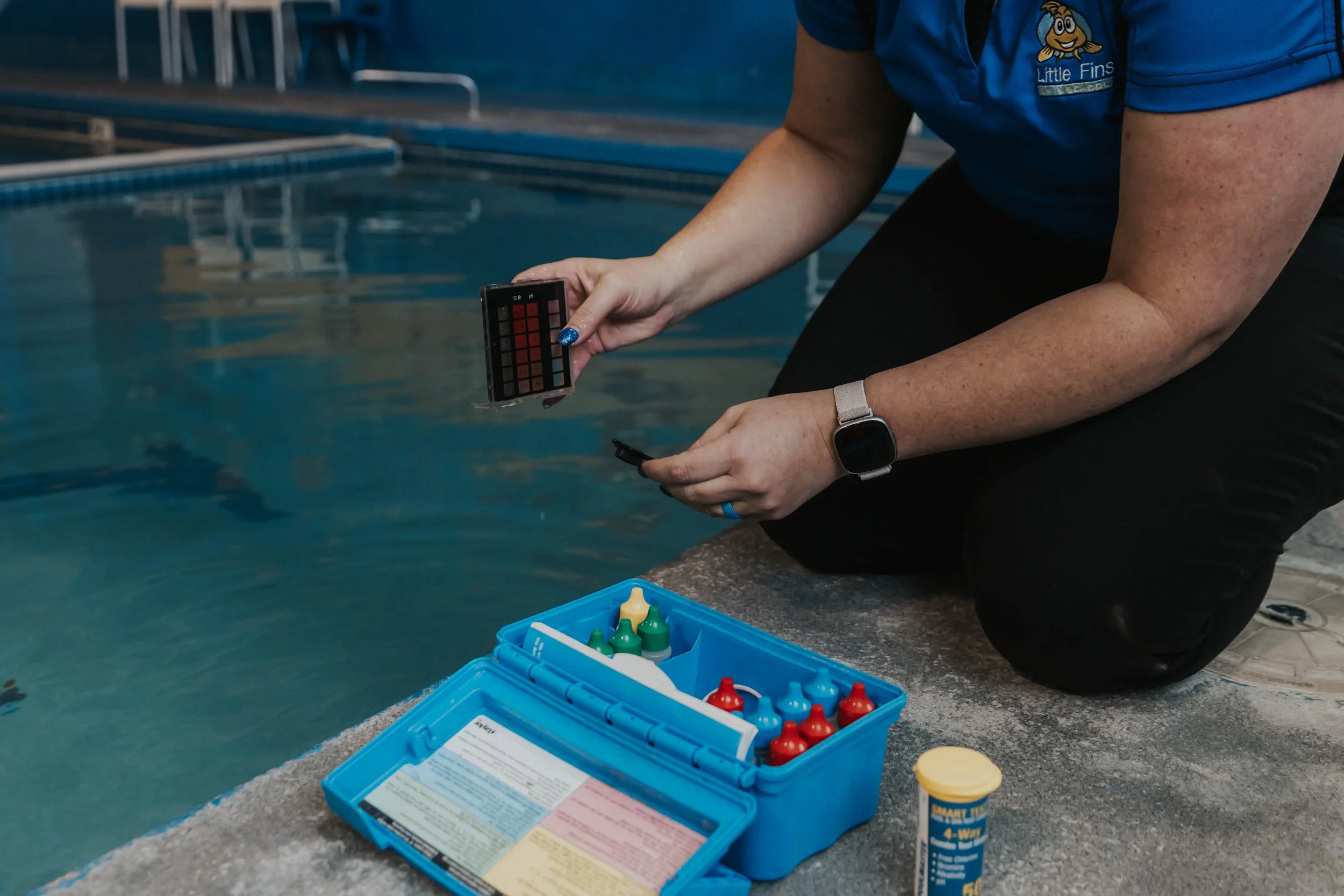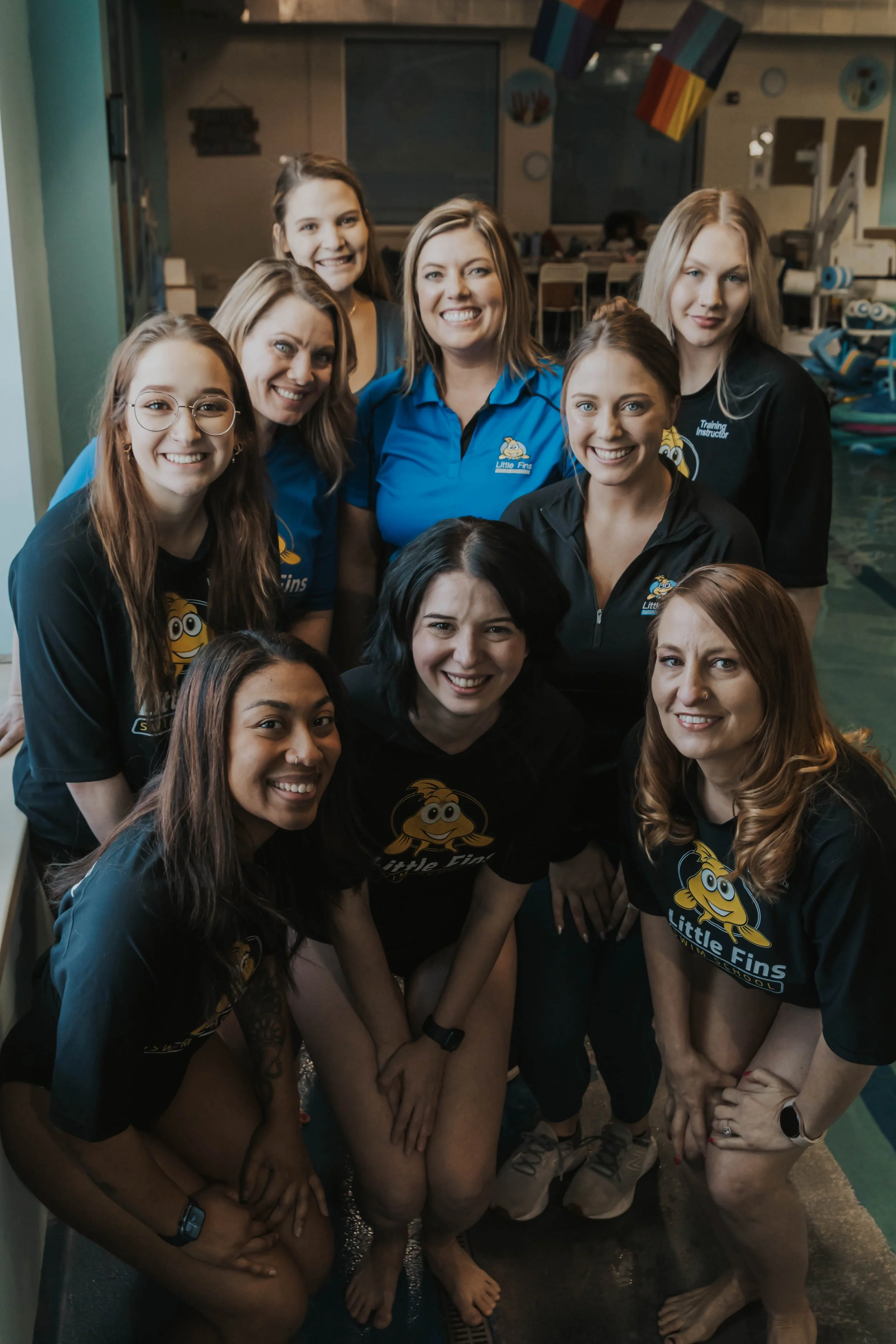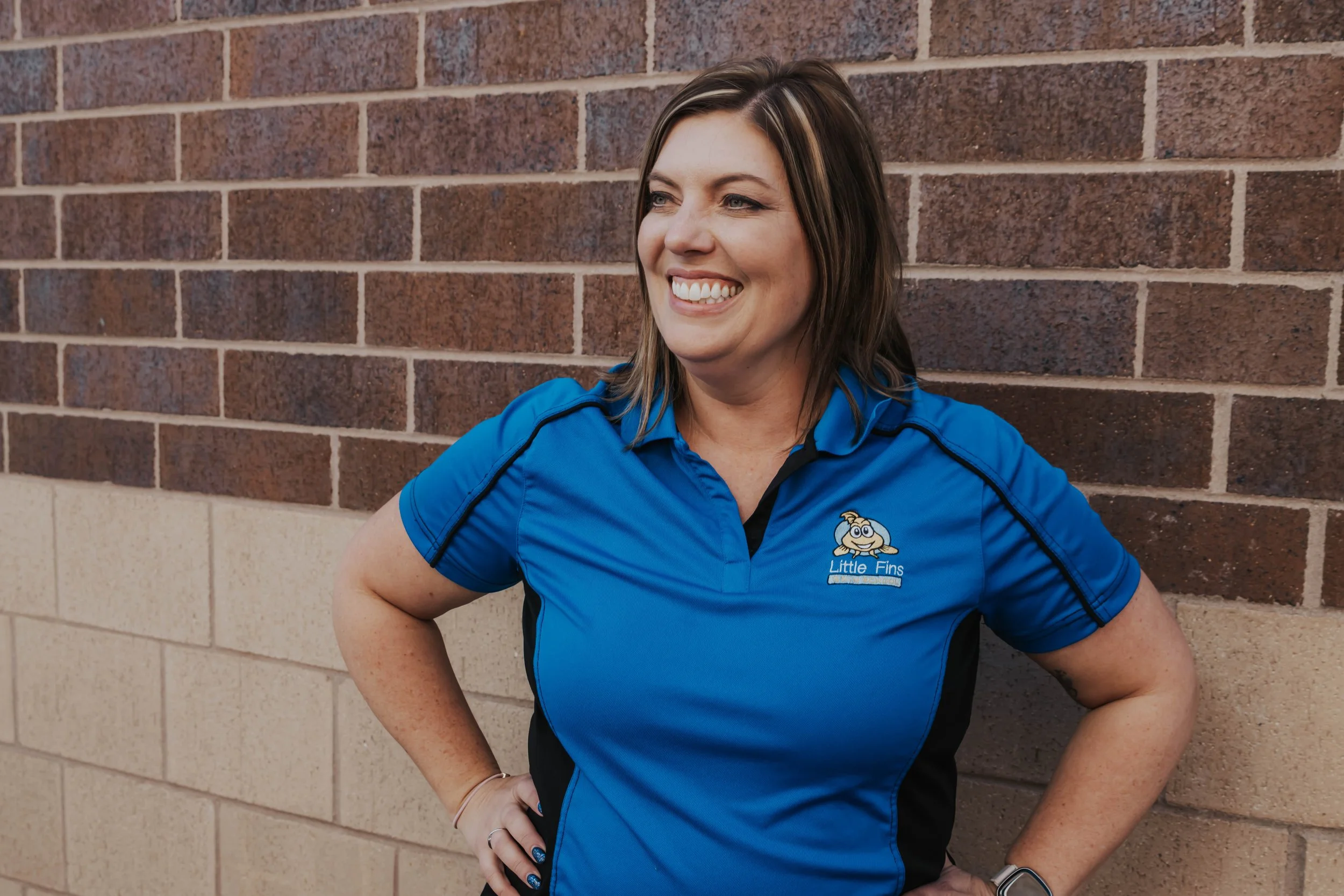The Science of Swim Progress: How Kids Learn to Swim Faster at the Right School
/Swim science isn’t just about chemistry, learning to swim has a scientific method as well,
By Lauri (Thomas) Armstrong, Owner of Little Fins Swim School in Colorado Springs
Introduction: Faster Progress Starts with Smarter Teaching
Every parent wants their child to learn to swim quickly, safely, and with confidence. But the truth is, not all swim programs are created equal. The speed and success of a child’s progress depend heavily on
how lessons are structured,
how the brain learns motor skills, and,
how the environment supports consistency.
At Little Fins Swim School in Colorado Springs, we design lessons around the science of learning. By understanding how children process new movements, retain skills, and gain confidence, we help swimmers make faster, more permanent progress, not just momentary milestones.
“Swim progress isn’t about how fast kids move through levels — it’s about how deeply they master safety, comfort, and control.”
1. The Neuroscience of Learning to Swim
Learning to swim is one of the most complex motor skills a child develops. It requires the brain and body to synchronize breathing, balance, rhythm, and reaction, all in a sensory-rich environment.
The Role of Neuroplasticity
Neuroplasticity refers to the brain’s ability to form and strengthen neural pathways through repetition.
According to the National Library of Medicine, repetition of precise movements helps the brain solidify skill memory.
When children attend lessons consistently, each session reinforces these pathways, transforming effortful movements into instinctive reactions that can literally save lives.
Muscle Memory Through Consistency
Like learning an instrument, swimming requires “muscle memory.” Once a swimmer masters coordinated kicking, breath control, and buoyancy, the brain locks those sequences into the motor cortex. Stopping lessons for months breaks this chain, which is why year-round swimming leads to faster, more durable progress.
2. How the Brain Processes Water Skills
Water provides sensory input unlike any other environment: tactile resistance, buoyancy, and proprioception (awareness of body position).
Multi-Sensory Integration
Each lesson activates multiple senses simultaneously: touch (water pressure), hearing (verbal cues), sight (visual feedback), and vestibular balance (orientation in space).
Research from Frontiers in Psychology shows that multi-sensory learning increases both retention and enjoyment.
By engaging multiple senses at once, rather than rote repetition, children learn faster and feel more connected to what they’re doing.
Emotional Safety Supports Cognitive Learning
Neuroscience confirms that when children feel safe, their brains release oxytocin and serotonin, chemicals that reduce stress and improve learning. That’s why small class ratios (or even better, one-on-one lessons), warm water, and patient instructors are not just “nice to have,” they’re scientifically proven accelerators of progress.
Want your child to experience a program designed for how kids actually learn?
Book a Free Trial Lesson at Little Fins Swim School
Children learn best when feedback is immediate. one-on-one instruction, allow instructors to adjust drills on the spot, ensuring each repetition and movement builds correctly.
3. The Role of Environment: Why Warm Water and Small Ratios Matter
The physical and emotional environment plays a major role in how children absorb new skills.
Warm Water for Relaxation
Studies from the American Red Cross and Swim England show that warm pools (around 89-94°F) help reduce tension and improve muscle coordination, particularly for beginners. In cooler pools, anxiety and stiffness increase resistance, slowing skill acquisition.
Small Ratios for Faster Feedback
Children learn best when feedback is immediate. Small class sizes, or one-on-one instruction, allow instructors to adjust drills on the spot, ensuring each repetition and movement builds correctly.
Experience warm, calm pools and personalized instruction that helps kids thrive. Explore Our Swim Programs.
4. The Cognitive Science of Skill Progression
Progress in swimming isn’t linear; it’s layered. Each level builds on foundational motor and mental skills.
-
The first stage is learning controlled breathing and submersion = establishing trust in the water.
-
Once children can control breathing, they learn how to float, glide, and feel their body’s relationship with the water’s surface.
-
Here the brain begins sequencing rhythmic motions: kicking, pulling, and turning the head to breathe.
-
Confidence grows through survival swim exercise, floating and self-rescue training.
Each layer creates a neural framework of safety and skill that becomes second nature through repetition and reinforcement.
Our instructors specialize in structured, science-based progression that builds lifelong safety.
Meet Our Swim Instructors
5. The Instructor’s Role: Turning Science Into Progress
The right instructor bridges the gap between science and experience.
At Little Fins, every instructor is trained to:
Observe and adapt to each child’s learning pace
Use positive reinforcement and non-verbal cues
Apply developmental psychology to reduce fear and enhance focus
This individualized approach transforms lessons from routine drills into moments of empowerment.
Feedback Loops & Positive Reinforcement
Research by Harvard’s Center on the Developing Child shows that positive reinforcement strengthens neural connections, increasing both motivation and retention.
When instructors give feedback, encourage response, and celebrate effort, progress accelerates exponentially.
Every instructor at Little Fins is trained in the art and science of teaching.
6. The Impact of Consistency on Long-Term Mastery
Inconsistent practice interrupts both confidence and motor retention. According to Swim England’s Learn to Swim Framework, the most successful swimmers are those who attend lessons regularly year-round — reducing regression and building safety reflexes faster.
Children who practice swimming consistently are:
3x more likely to master skills before age 7
2x more likely to retain those skills through adolescence
100% more confident in emergency situations
This is why we emphasize continuity over intensity, a steady rhythm of learning builds confidence that lasts a lifetime.
7. Measuring Progress the Right Way
Progress is about more than levels or ribbons, but those are fun too, and celebrated at every step along the way.
At Little Fins, we evaluate growth through four dimensions:
Confidence: Does the child show comfort and curiosity in the water?
Competence: Can they perform foundational skills safely and independently?
Consistency: Do they maintain progress across sessions?
Communication: Are they engaging, listening, and responding to cues effectively?
We celebrate milestones but focus on mastery, because true swim success is built on skill, not speed.
See measurable progress through our proven, science-backed swim curriculum.
Discover the Little Fins Difference
8. Conclusion: Smart Structure, Faster Progress
Children learn faster when science guides the process, not shortcuts. Through one-on-one instruction, warm water, repetition, and positive reinforcement, Little Fins Swim School has created an environment where science and care come together for one powerful outcome: real, lasting swim progress.
At Little Fins, we don’t just teach swimming, we teach confidence, safety, and resilience that lasts a lifetime.
About Lauri (Thomas) Armstrong
Lauri (Thomas) Armstrong is the owner of Little Fins Swim School in Colorado Springs, Colorado. She has over a 15 years of experience in aquatic education, drowning prevention, and early childhood swim instruction. Under her leadership, Little Fins has become an award-winning program dedicated to safety, skill, and confidence in the water.
With a mission of “Safety first. Skills for life. Awareness for the world,” Lauri has led her team to teach more than 30,000 one-on-one swim lessons annually, empowering families across Colorado through education, community partnerships, and scholarship programs.
Recognized for her leadership in drowning prevention and early childhood swim education, Lauri continues to advocate for programs that make swimming accessible, safe, and joyful for every child. Lauri graduated from Colorado College with an undergraduate Biology degree, and holds a Master’s degree in Leadership from the University of Colorado, Colorado Springs. (Also known as Lauri Thomas in earlier publications and community swim education initiatives.)






